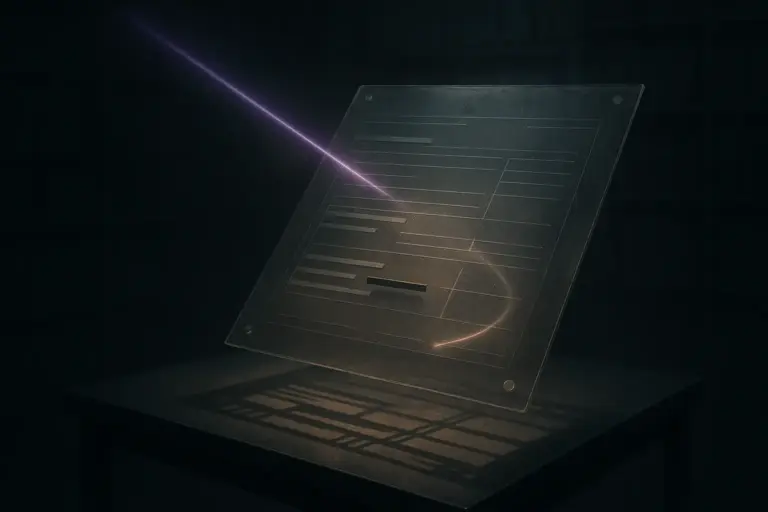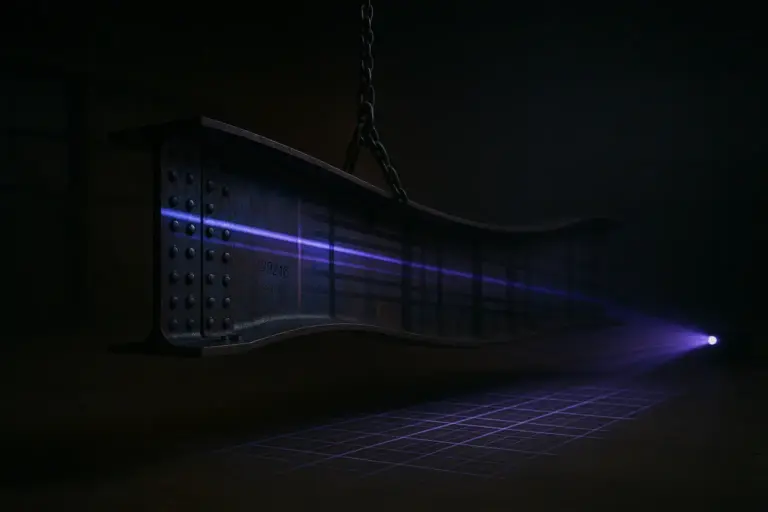The Gulf of Tonkin Incident: A Declassified Analysis of the Pretext for War
Declassified intercepts show phantom sonar returns in the gulf of tonkin incident were edited into certainty, providing the clear signal required for war.
The paper is thin, onion-skin, the kind that takes carbon copy scars. A typed log notes phantom torpedoes under a weathered grease-pencil arc. The contradiction is stark: declassified analysis concluded the second attack at the center of the gulf of tonkin incident likely did not occur, yet it became the cleanest line on a map to war. The intercept slips rustle as if withholding one name, one time stamp. The room hums, and somewhere between sonar pings and radio chatter, certainty was edited into being.
- What the Video Adds (Quick Summary)
- Reports from USS Maddox revealed sonar contacts misidentified as enemy vessels—later confirmed as marine life.
- Secretary McNamara’s briefings transformed operational uncertainty into presidential certainty within hours.
- Declassified memos show commanders expressed doubt before Washington demanded confirmation.
- The incident became the foundation for the Tonkin Gulf Resolution, granting blank-check military authority.

Radar ghosts and the second night that bent the gulf of tonkin incident
On 4 August 1964 the sea was restless and the scopes were busy. Sonar traces broke and reformed in patterns a calm ocean would have resolved; radar returns multiplied like afterimages. Logs from the destroyers recorded torpedo tracks that later reconstructions could not confirm. Pilots reported no visual hits. In the hours that followed, radio circuits filled with confirmations seeking themselves. Declassified reviews would later conclude that the first engagement on 2 August was real, but the second was a convergence of misread sensors, recirculated assumptions, and weather-fed ghosts (Source: NSA, 2005-11-30, Gulf of Tonkin Mystery analysis). The file edges suggest an edit made after the fact, not to invent a battle, but to keep a policy vector straight.
DESOTO patrol logs and OPLAN 34A proximity under SIGINT glare
The USS Maddox ran a DESOTO patrol line close enough to coastlines to invite scrutiny and intercepts. Nearby, covert raids linked to OPLAN 34A pressed the shoreline on separate tracks but within the same mental map neighbors would draw. Communications intercepts recorded North Vietnamese traffic over the 2–4 August window, but time stamps and translations later reviewed did not align cleanly with the second-night alarm (Source: NSA, 2006-05-30, DESOTO and OPLAN 34A operational context). The USS Turner Joy’s reporting cadence mirrored the atmosphere more than the sea. In the reconstruction, proximity mattered: what was compartmented operationally blurred in perception on the water and in the watch centers, pushing ambiguous SIGINT into a ready-made frame where when research goes dark institutional pressures shape evidence faster than analysts can qualify it.
“A green trace thickens when enough eyes will it so.”
Redaction by selection how SIGINT shaped the official narrative
Internal histories show that intercept translations favorable to a second strike moved fast and far, while contradictory fragments stayed local or were judged less reliable. Analysts faced the same pressure every war room exerts on a midnight shift: find coherence before morning. Some intercepts were missing from later compilations; others were summarized with confidence that the raw traffic did not fully support (Source: National Security Archive, 2005-12-01, NSA history revealing skewed intelligence). In the brief path from collection to President’s desk, qualified language flattened, and uncertainty was treated as noise to be filtered. The public record that followed spoke with a certainty the primary files did not entirely share, a pattern familiar to those tracking creatures between footnotes in official archives.
“One file was missing — the one that mattered.”
From coded cables to the Tonkin Gulf Resolution escalation
Congress moved with extraordinary speed. The Tonkin Gulf Resolution passed with near unanimity, codifying latitude for escalation based on a two-night narrative that the archives would later bifurcate—one attack confirmed, one likely imagined (Source: U.S. Navy, 2015-08-25, declassified naval cables 2–4 August). Carrier decks filled, sortie counts climbed, and the war entered a new register. The institutional lesson is not that deception was scripted, but that ambiguity, once harnessed, can perform like proof. In every later conflict review, the pattern reappears: sensors under stress, summaries under pressure, and policy riding ahead of the evidence, ghosts on the scope teaching the margins of briefings what radar alone cannot decode.
Sources unsealed the Tonkin Gulf paper trail
PRIMARY — NSA historical analysis documenting missing translations and the second-night ambiguity (Source: NSA, 2005-11-30, The Gulf of Tonkin Mystery release 1)
PRIMARY — NSA technical study detailing the DESOTO patrol context and OPLAN 34A proximity to operations that influenced perception (Source: NSA, 2006-05-30, DESOTO Patrols and OPLAN 34A release 2)
PRIMARY — CIA contemporaneous assessment providing a near-term institutional read of the naval engagements and their evidentiary basis (Source: CIA, 1964-09-18, CIA review board memorandum)
PRIMARY — U.S. Navy declassified logs and cables establishing the operational timeline for 2–4 August (Source: U.S. Navy, 2015-08-25, Formerly classified documents compilation)
SECONDARY — Archive synthesis summarizing the NSA’s internal conclusion that intelligence was skewed toward an attack narrative (Source: National Security Archive, 2005-12-01, Press briefing on skewed intelligence)
SECONDARY — Contextual dossier 40 years later connecting declassified files to policy outcomes including the Tonkin Gulf Resolution (Source: National Security Archive, 2004-08-04, Fortieth anniversary briefing book)
Final transmission the Tonkin echo that endures
A dim scope glow on a metal console. A ribbon of teletype curling like surf against a bulkhead. The night is quiet except for the shuffle of papers that decided a decade. In the hush, the gulf of tonkin incident reads less like fate and more like a caution etched in salt and static. Home · Real Conspiracies · False Flag Operations
Signal ends — clarity remains.
What did SIGINT actually show on the second night in August 1964
Declassified analyses indicate that many reported torpedo tracks were sensor artifacts and misinterpreted communications rather than confirmed attacks. Analysts later assessed the second night reports as highly doubtful while the first engagement on 2 August stands as real. Source: NSA, 2005-11-30, nsa.gov skunks and bogies pdf
How did DESOTO patrols relate to OPLAN 34A operations and the Tonkin Gulf narrative
DESOTO patrols gathered signals close to the coast while separate OPLAN 34A raids occurred nearby in time and space. That proximity blurred perceptions at sea and in watch centers and helped ambiguous intercepts fit an attack storyline. Source: NSA, 2006-05-30, nsa.gov DESOTO OPLAN 34A pdf
What remains uncertain about the gulf of tonkin incident and Resolution
The precise sequence of the 4 August reports retains uncertainties due to missing or selectively summarized translations though the gulf of tonkin incident is now widely distinguished as one real clash and one likely false alarm. The policy response however moved faster than the evidence leaving gaps that archives cannot fully close. Source: National Security Archive, 2005-12-01, nsarchive2.gwu.edu skewed intelligence
They Don’t Want You to Know This
Join the society of the curious. Get early access to leaked findings, hidden knowledge, and suppressed discoveries — straight to your inbox, before they vanish.




